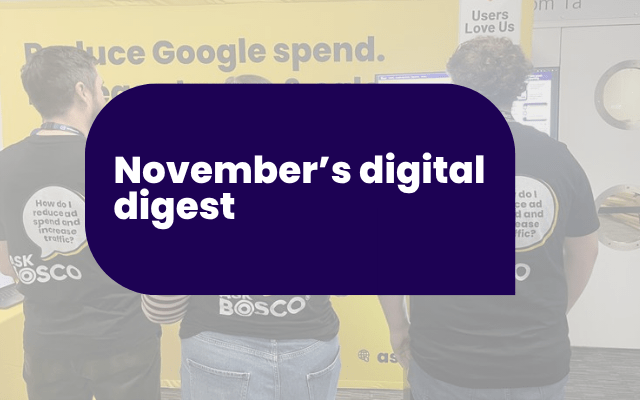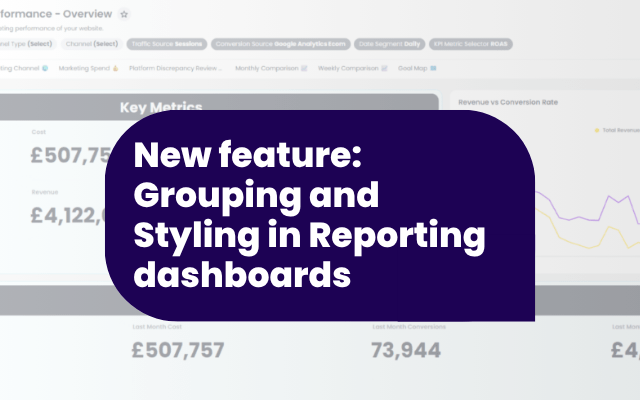In this month’s digital news, Google’s long-awaited total campaign budget option is now appearing in Performance Max campaigns across non-U.S. This could be the start of a global beta rollout. AI is enabling adverts that adapt to an individual’s personality by analysing public online activity, search history and even what people write in ChatGPT.
Google Ads turns 25, evolving from manual keyword campaigns to AI-driven automation. Semrush launches a tool to track visibility across traditional and AI search.
Leaked Meta docs reveal $16B in projected scam ad revenue, raising trust concerns. Consumers trust virtual influencers more than digital twins, giving them an edge in recommendations and purchase influence.
Google rolls out total campaign budgets for PMax beyond the U.S.
Google has begun introducing a total campaign budget option within Performance Max for advertisers outside the U.S, signalling what looks like the early stages of a wider global rollout.
The new setting sits alongside the standard average daily budget and removes the need for advertisers to convert fixed budgets into daily spend manually. Practitioners report already having access to the feature, suggesting the planned expansion to Search, Shopping and PMax is in motion.
For marketers running short-term or flighted campaigns, the change brings clearer spend control and reduces the chances of overspending caused by daily pacing. In essence, Google is finally aligning budgeting with how many PPC teams plan campaigns in practice, offering smoother management for time bound and burst activity.
Read more here.
Will AI mean better adverts or ‘creepy slop’?
AI is enabling adverts that adapt to an individual’s personality by analysing public online activity, search history and even what people write in ChatGPT. Agencies are already tailoring colours, music and wording to reflect traits such as introversion or extroversion. Creating millions of unique ads rather than targeting broad demographic groups. Supporters say this improves relevance and reduces wasted spend. While critics argue the results risk being forgettable, intrusive and reliant on a data ecosystem many users find uncomfortable. For us, we still see the benefit of human led approach, but AI has its place in helping brands scale where costs were prohibitive previously.
Read more here.
25 years of Google Ads
Over twenty five years, Google Ads has evolved from a simple keyword based system into an AI driven marketing platform. Early AdWords offered full control and transparency but required manual effort and technical skill. Today’s Google Ads delivers automation, scale, and multi-channel reach through tools like Performance Max and Gemini AI, though at the cost of granular control. Modern advertisers focus more on data strategy and privacy compliance than on manual optimisation. Google continues to balance automation with transparency, responding to feedback and tightening trust. Ultimately, whether Google Ads was better then or now depends on what advertisers value most.
Read more here.
Semrush launches tool to measure performance in AI & traditional search
On November 7, Semrush released its AI vs SEO Comparison tool beta, designed to provide marketers with a single report showing their brand’s visibility in both traditional search rankings and the new AI answer formats, including Google’s AI Mode/Overviews and ChatGPT.
For Semrush users, this tool provides the necessary data to integrate AI visibility into their existing competitive strategies. By offering metrics from both environments, the tool enables users to shift their focus from just securing the top blue link to achieving mentions and citations in AI. Marketers can now accurately gauge dual performance and adjust their content specifically to be both highly ranked and easily sourced by AI systems, giving Semrush users a new analytic advantage.
Read more here.
Leaked docs reveal Meta’s $16B scam ad revenue projection
Leaked internal documents suggest Meta may earn around $16 billion in 2024 from scam advertisements and banned goods, nearly 10% of its total revenue. Reports indicate the company displayed about 15 billion high risk scam ads daily and that such ads generated roughly $7 billion annually. Despite knowing key offenders, Meta allegedly failed to act quickly, allowing some high spending accounts to continue operating after hundreds of violations. Meta disputed the figures, claiming progress in reducing scam reports by over half. The revelations raise concerns about Meta’s ability and willingness to curb fraudulent advertising and protect user trust.
Read more here.
Virtual influencer vs digital twin? Who wins?
Consumers trust virtual influencers more than digital twins, giving them an edge in recommendations and purchase influence. 76% trust virtual influencers for recommendations and 68% for purchases, while 57% say digital twins reduce trust. 62% of creators worry about losing ground to virtual influencers, and 59% fear feed oversaturation. Brands value virtual influencers for control and availability, but they require high creative investment and lack the emotional depth of human creators.
Read more here.
For more information on any of these stories, or for support with ASK BOSCO®, please get in contact with our team, team@askbosco.com.




